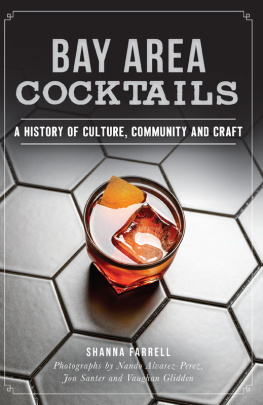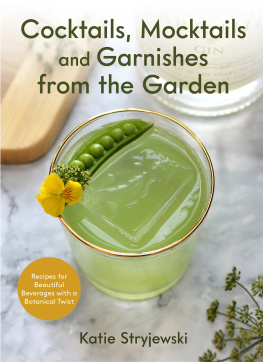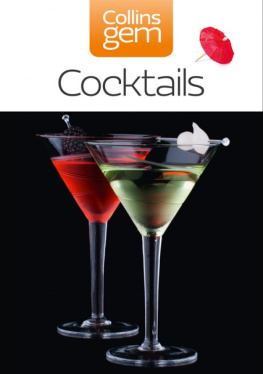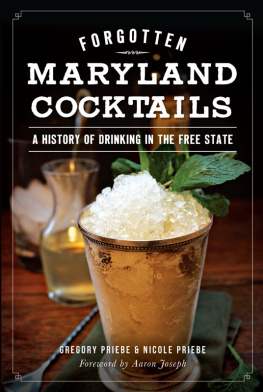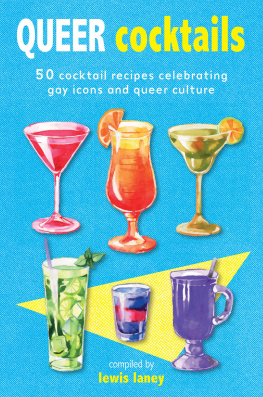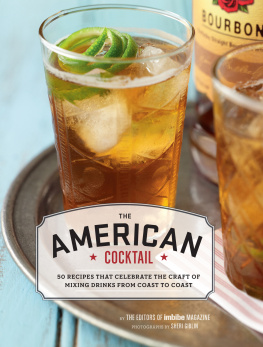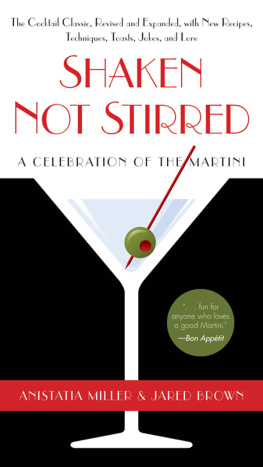

Published by American Palate
A Division of The History Press
Charleston, SC
www.historypress.net
Copyright 2017 by Shanna Farrell
All rights reserved
First published 2017
e-book edition 2017
ISBN 978.1.43966.251.9
Library of Congress Control Number: 2017940918
print edition ISBN 978.1.46713.753.9
Notice: The information in this book is true and complete to the best of our knowledge. It is offered without guarantee on the part of the author or The History Press. The author and The History Press disclaim all liability in connection with the use of this book.
All rights reserved. No part of this book may be reproduced or transmitted in any form whatsoever without prior written permission from the publisher except in the case of brief quotations embodied in critical articles and reviews.
This book is dedicated to everyone who has shared their stories with me.
ACKNOWLEDGEMENTS
There are countless people who helped to make this book possible. The list is long and humbling. My everlasting gratitude to Ellie and Lance Winters, Thad Vogler and Martin Meeker for their early, and consistent, support of my work. Thanks to my first cohort of narrators, including Vogler, Julio Bermejo, Jrg Rupf, Jennifer Colliau, Claire Sprouse and Rhachel Shaw, as well as supporters Kayoko Akabori and Yoko Kumano of Umami Mart, Celia Sack of Omnivore Books and Deborah Marskey and Juan Carlos Garcia of Shrub &Co., all of whom made this project possible.
Thanks to my photographers, Nando Alvarez-Perez and Jon Santer, for providing me with such beautiful shots, and to Vaughan Glidden for styling the stills so expertly. Much love to Jacqueline and Kevin Dowell of Thirsty Vintage and the 86 Co. as well as Umami Mart, who all generously lent me their glasses and barware for the photos. Thanks to everyone at St. George Spirits, Chris Lane and Ramen Shop, Daniel Parks and Pagan Idol, John Dampeer and Hamlet and Emily Reynolds for providing us with locations to take the photos. Thanks to Phil and Hilary Brodey, who allowed me to use portraits from Capra Press Distilled Voice: California Artisans Behind the Spirits. Tremendous thanks to all those who helped make these photos possible, including Joe and Cathy Fragola, Rachel and Brad White, Robin Nagle, Maggie Hoffman, Evan Schaeffer, Bonnie Ross, Lamar Lovelace, Risa Nye, Melissa Watson, Russell Connacher, Martin Cate, Margaret Day, Amy and Julio Alvarez, Lisa Rubens, Dinah Sanders, Ethan and Andrea Ladd, Barbara and Abe Hardoon, Holly Henry, Dave Freund, Ada Alvarado, Edgar Harden, Lou Bustamante, Sara and Eric Marxmiller, Maia Bittner, Nick Melle, Jessica Schreiber, Jessica Miller, Sophie Cooper, Andrea Perkins, Susan Higgins, Sewon Barrera, Chris Cabrera, Vu Pham, Mary Chiles, Jessica Peterson, Adrian Hopkins, Wyatt Howard, Jon Glidden, Lindsay Jones, Jessica Gutierrez, Michelle Walk, Rafael Jimenez Rivera, Douglas Fair, Claire Sprouse, Buzz Anderson, Corina Darold, Justin McGuirk, Nate Stearns, Pearl River Public Library, James Lee, Shannon Supple, Nat Harry, Diana Yee, Genevieve Conaty, Matthew Wyne, Andrew Wooster and all those who donated anonymously.
I am especially grateful to my readers, including Eric Marsh, Carla Fresquez and Cristina Kim. Your help was invaluable.
Thanks to Talia Kleinplatz for letting me pull a guest shift and hone my narratives on Two for the Bar.
Thanks to my parents, Jim and Suzanne Farrell, who have allowed me the freedom to pursue my dreams and believe that anything is possible, including a book, and my sister, Jessica Mara, for always being my biggest cheerleader.
The biggest thanks of all belongs to John Fragola. I could not have done this without his unconditional love and support, willingness to let me think out loud and perpetual excitement to hear about my interviews, as if they were his own. This has meant the world to me.
INTRODUCTION
I distinctly remember the first cocktail I ever made. After years of waiting tables, I had finally earned a spot behind the bar. The drink was not your ordinary three-ingredient cocktail. It was a Pisco Sour, a drink that might as well be on the Peruvian flag. The bar was known for this cocktail, as our manager had been featured on a local Brooklyn television station discussing how we made it. I cracked a fresh egg directly into my tins, squeezed half a lime by hand into my jigger and measured a bar spoon of fine white sugar. After I assembled all of the ingredients in my tins, including the pisco, I added ice and shook the shit out of it, as I was expressly instructed. I wasnt yet skilled enough to know that in order to get the fluffiest possible egg white, I should shake first without ice for a few seconds to obtain maximum froth, later adding ice for dilution. Instead, I poured the drink into a coupe glass, added a few dashes of Angostura bitters on top and proudly served it to my guest. Ill never forget the rush of satisfaction making that drink gave me. My guest sipped it and nodded in approval. Instant gratification achieved. I was hooked.
A short time later, I had the best Manhattan of my life. It was stirred and poured over a large square ice cube, garnished expertly with a lemon twist. I had never tasted anything so interesting. The flavor of the whiskey with the fresh sweet vermouth swirled in my glass and on my tongue. I thought about that Manhattan for years to come, always chasing that experience but never quite able to replicate it.
Those two experiencesone making and one tastingopened the door to a whole new world for me. These moments of accomplishment and inspiration allowed me to progress at a stagnating restaurant job, where I was working my way through graduate school. Like many nascent to the world of cocktails, this new avenue of exploration challenged me to do more and be more. It validated the process-oriented approach I took to most things. At the time, I was living in Brooklyn and had been raised by proud New Yorkers. Like countless others, I thought that New York was the center of the world, including cocktail culture. That is, until I moved to California.
I relocated to the Bay Area for my dream job as an oral historian with University of CaliforniaBerkeleys Oral History Center. Having worked in restaurants and bars throughout my twenties, I found comfort on a bar stool when I first moved to town. Though I was no longer shaking and stirring for guests, I was most interested in talking to those who were. Here, in my new home, I found my community among bartenders. Less than a year after I started working at the Oral History Center, I launched an oral history project on West Coast cocktails. I assembled an advisory team that included famed industry veteran Dale DeGroff and the venerable cocktail historian David Wondrich. After having several conversations with them about the project, I quickly dove into the history of cocktail culture in the West. And boy, did I have a lot to learn.
The legacy of bars on the West Coast is deep and diverse. San Francisco has always been a cocktail town, which is a fact that was repeated over and over to me in my interviews. Many popular national trends would not exist without the contributions from bartenders in the Bay Area. San Francisco was one of three global cities that helped shape cocktail culture as we know it today, equal to New York and London. My interviews with distillers, bar owners, bartenders and cocktail historians illustrated just how important the Bay Areas history with cocktail culture has been for many decades. Its geographic location lends itself to proximity for imports, as San Francisco was once a port city. It benefits from the technology coming out of Silicon Valley. The access to diverse agriculture highlights seasonality and breeds creativity. It provides distillers with interesting ingredients. The size of San Francisco and cities in the East and North Bays engender a small, close, supportive community. The intellectual nature of the area creates an environment where bar menus can incorporate history and consumers are savvy, often curious to try new things. These are just a few of the aspects that make the Bay Area unique.
Next page
